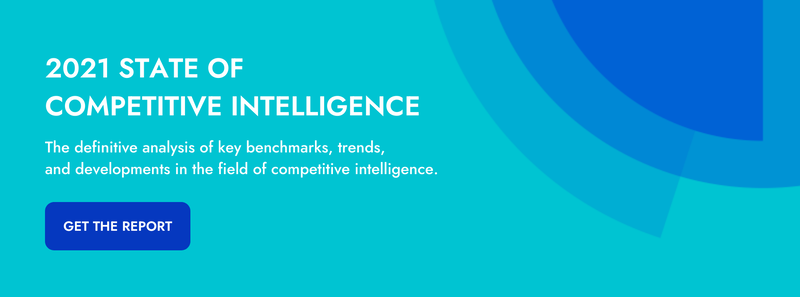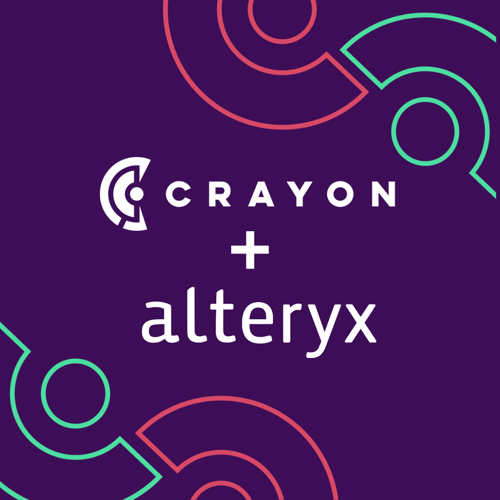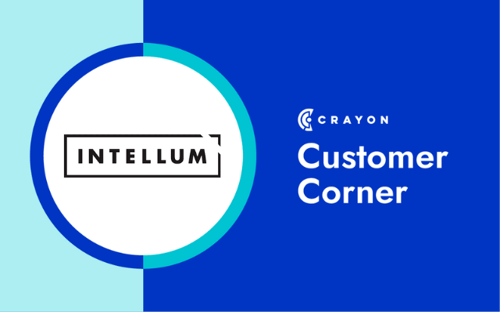 Crayon's Competitive Intelligence Spotlight is an interview series where we chat with intelligence professionals to get a glimpse into their careers and gain unique insight into competitive strategy. In this edition of the Competitive Intelligence Spotlight Series, we shine the light on Paul Santilli, Worldwide OEM Industry Intelligence and Strategy at Hewlett Packard Enterprise .
Crayon's Competitive Intelligence Spotlight is an interview series where we chat with intelligence professionals to get a glimpse into their careers and gain unique insight into competitive strategy. In this edition of the Competitive Intelligence Spotlight Series, we shine the light on Paul Santilli, Worldwide OEM Industry Intelligence and Strategy at Hewlett Packard Enterprise .
ED: What is your role, and what does your company do?
PS: I work for Hewlett Packard Enterprise and head up the WW OEM Industry Intelligence & Strategy effort. I’ve been with HPE for 24 years and spent ten years at Apple Computer prior to that in various Intelligence and Quality leadership roles. I also serve as the Chairman of the Member Advisory Board for SCIP (Strategic & Competitive Intelligence Professionals).
ED: Competitive intelligence (CI) has changed so much over the years, going from strictly manual to automated, and it’s more widely practiced. How do you see CI evolving over the next 5-10 years?
PS: It is apparent that the whole function of data analytics and strategy development has transformed significantly over the past several years as a direct result of the Big Data revolution. The number of roles at organizations in leadership positions around “data-driven deliverables” has grown significantly, as well as industry business development offerings around managing company data both from a capitalization and an intelligence standpoint. One of the many challenges that companies face is really harnessing the value from the data they acquire at the speed that is necessary to out-perform their competitors. I continuously refer to the simple relationship that the time necessary to acquire and act on the data has to be faster than the competition for any growth proposition. So the continued evolution of data science towards automated collection and taxonomy, accurate veracity assessment, and quick execution of deliverables has to occur essentially in real time. And having an IT infrastructure and, moreover, an organizational culture that universally supports this “data management paradigm shift” is absolutely essential to survival and growth.
ED: How do you effectively translate competitive intelligence information into action to move a company forward?
PS: Thorough knowledge and expertise around industry and competitive acumen needs to be the fundamental foundation of any strategy effort for an organization. And of course, business strategy decisions should flow from the results from your analytics findings. Now, this may seem simple enough, but of course, the devil is in the details with all of the challenges of translating this tidal wave of data into actionable insights. So let’s assume you’ve overcome those challenges and mastered the ability to provide a clear strategy from this information chaos. Unfortunately, that is only a small part of the business challenge. The watershed moment here needs to be a fast and efficient way of connecting that strategy and the resultant actions with the linkages of your go-to-market lifecycle on an organizational basis. These actions need to drive your marketing, product development, supply chain, manufacturing/distribution, etc., and ultimately, the customer experience. Furthermore, the company needs to be nimble enough to be able to make course corrections as new data is assessed with potential alternative scenarios that might modify the strategy and resultant actions. Understanding the critical nature of the foundational intelligence platform and how it impacts organizational make-up is paramount in maximizing business growth initiatives.
ED: How do you see COVID-19 impacting the way organizations should conduct competitive intelligence research?
PS: I believe the COVID-19 pandemic has amplified business risk areas, and most probably accelerated the natural evolutionary course of some industries and businesses by rapidly exposing inherent weaknesses in their business models. Referencing a paper on business disruptions and impacts from COVID-19 on intelligence and strategy (SCIP Competitive Intelligence Magazine, 7/2020 https://www.scip.org/page/Building-Organizations-to-Weather-Global-Disruptions), I refer to the challenges that disruptions present. In it, I challenge the thinking about disruptions (like COVID-19) as being individual randomly occurring events, rather more appropriately, a perpetuating continual disruptive feed that exhibits universally-common characteristics of disruption regardless of the cause. Because in today’s 4th industrial revolution dynamics, by definition, the complexity of technology and the integration with human behavior makes the resulting environment unfamiliar and potentially unnerving to industry and people alike no matter where it is originating from. This perpetual disruption model requires a very different method of data analytics and CI that has historically been characterized. Past traditional “batch” processing of data from history would potentially give a storyline for behavior in the future. In today’s society, this logic is woefully misleading. Consider COVID-19, the tragedy of 9/11, or any major world-impacting event (which, to my point, are now experienced almost daily) and how much of this historical data collected before this “impact” would essentially be outdated and practically unusable. Today’s perpetual disruption model only exacerbates the problem of not only trying to decipher the code on how to navigate the current disruptive waters, but to ideally emerge stronger and better equipped to weather more ongoing storms. And the only way to do this is to employ a continuous data intelligence model that drives actionable insights into a company infrastructure that promotes flexibility and efficiency.
ED: What are the biggest challenges you see competitive intelligence professionals facing, and how do you recommend they overcome these challenges?
PS: In addition to all of the challenges I explain above, I continue to see many of my colleagues still grapple with the common challenges CI professionals have faced over many years. An obvious major pain area is how to develop Insights-to-actions, in such a way as to really make impactful business changes that help steer the company ship in the right direction. Analogous to this is the need for an Executive cultural mindset towards data-driven strategy development. Additionally, Tool implementation and usage, especially around AI, is going to be especially challenging but absolutely necessary. Data scientists need to look at AI/ML modeling that can not only predict future outcomes, but to also prescribe a recommendation on how to best exploit the competitive positioning to garner the greatest returns. All of these challenges become more amplified, especially under the “new norm” of the perpetual disruption model, placing greater pressure on the organization for progressive growth strategy development.
ED: Companies that excel at competitive intelligence have it truly integrated into their culture. What are your recommendations for changing company culture to incorporate CI?
PS: Fundamentally, organizations need to challenge themselves on how they can be the disruptor in the industry, rather than being the disrupted. This requires a major paradigm shift in cultural thinking and strategy development. Expanding the role of the traditional CI individual into one that recognizes not only the core competencies of their business, but also how peripheral nuances in the digitization of the value chain can impact their business or moreover, their industry. Data analytics that can highlight fragile business processes around supply chain, manufacturing, services, etc. need to morph into agile customer-centric models that focus on serving business needs and have flexibility and nimbleness designed in their process DNA. Evolving the role of the CI practitioner into an Intelligence Strategist will help in not only identifying SWOT parameters, but to highlight real business growth opportunities that spearhead a disruption-driven roadmap toward revenue growth.
Overall, this is an extremely exciting time to be involved in data analytics and no better time for the Data Scientist to be in a position of influence in a company’s direction and success. Understanding the continuous nature of the perpetual disruption model will equip future Intelligence Strategists to expand their role into forward-looking disruption-based business growth enablers through intelligence and insights.

Related Blog Posts
Popular Posts
-
 The 8 Free Market Research Tools and Resources You Need to Know
The 8 Free Market Research Tools and Resources You Need to Know
-
 24 Questions to Consider for Your Next SWOT Analysis
24 Questions to Consider for Your Next SWOT Analysis
-
 6 Competitive Advantage Examples From the Real World
6 Competitive Advantage Examples From the Real World
-
 How to Measure Product Launch Success: 12 KPIs You Should Be Tracking
How to Measure Product Launch Success: 12 KPIs You Should Be Tracking
-
 How to Create a Competitive Matrix (Step-by-Step Guide With Examples + Free Templates)
How to Create a Competitive Matrix (Step-by-Step Guide With Examples + Free Templates)




